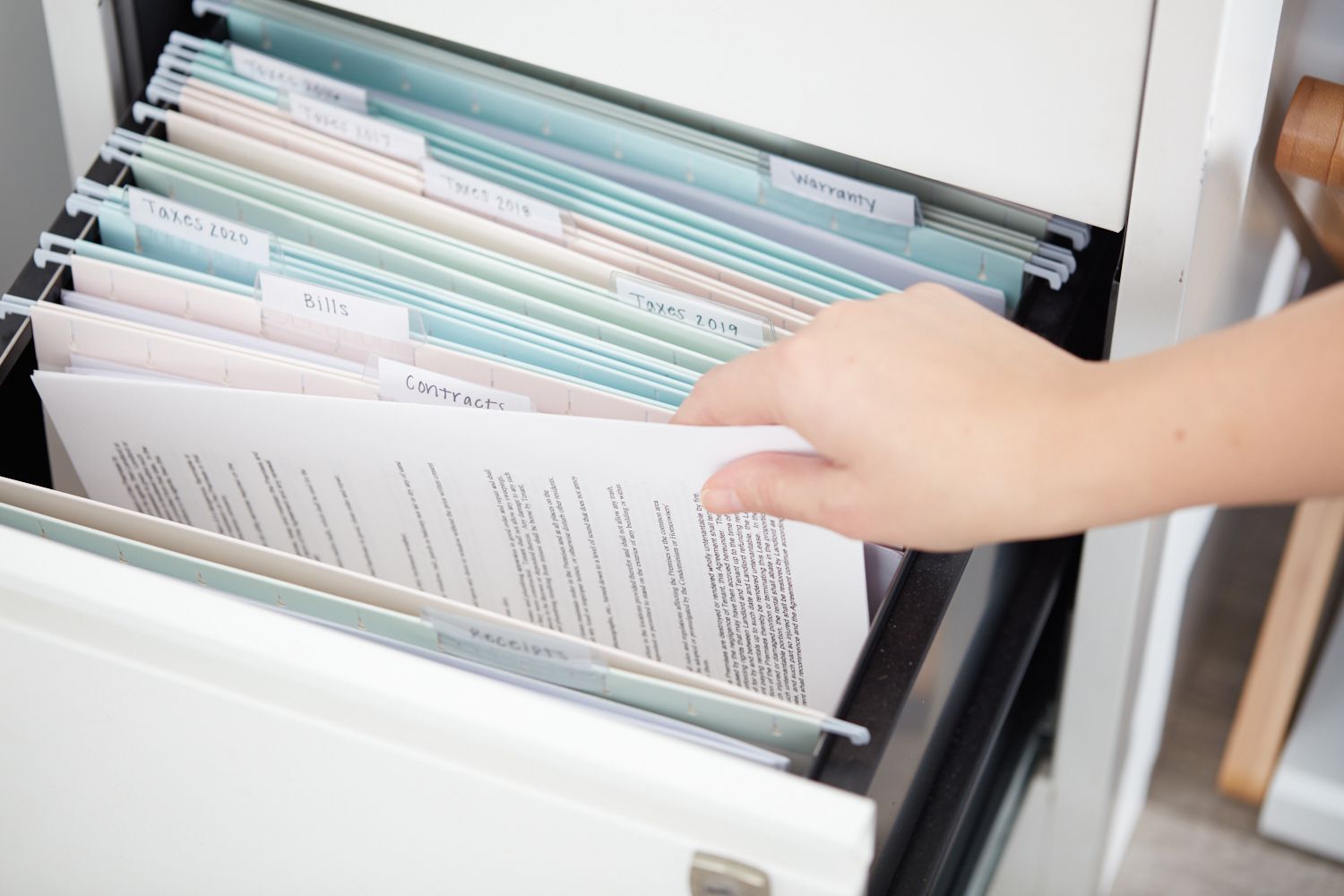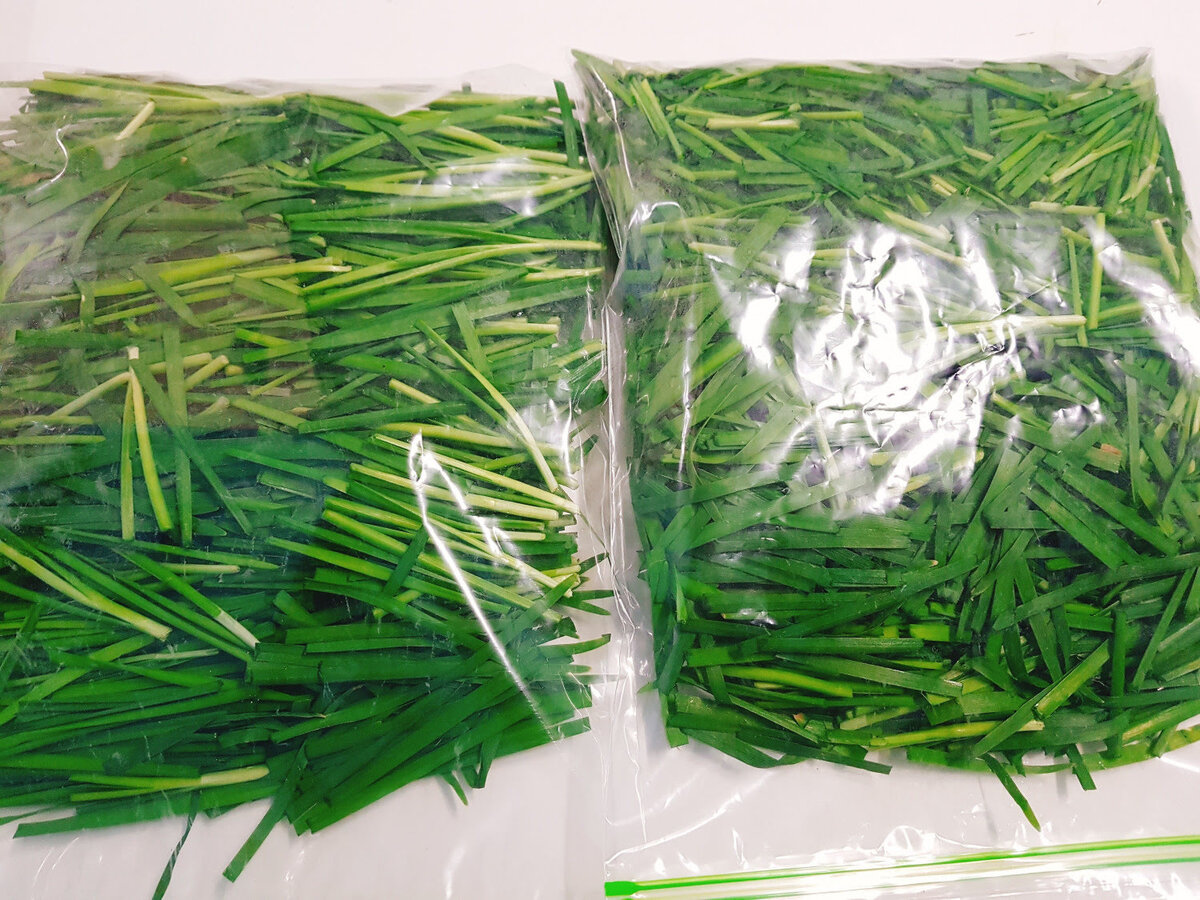

Articles
How To Store Paper Documents Long-Term
Modified: January 5, 2024
Learn the best practices for storing and preserving paper documents for the long term. Discover expert tips and techniques in this comprehensive guide.
(Many of the links in this article redirect to a specific reviewed product. Your purchase of these products through affiliate links helps to generate commission for Storables.com, at no extra cost. Learn more)
Introduction
In today’s digital age, where technology dominates our lives, it’s easy to overlook the importance of paper documents. However, there are still many situations where physical documents play a crucial role. From legal contracts and government forms to personal records and sentimental letters, paper documents can hold immense value and significance.
Whether you’re a business owner, a professional, or an individual looking to preserve important papers, it’s essential to think about long-term storage. Storing paper documents properly ensures their longevity, protects them from damage or loss, and enables easy access when needed.
In this article, we will discuss the importance of long-term paper document storage and explore various factors to consider when implementing a storage solution. We’ll also delve into the different types of storage containers available and provide tips on managing digital copies of paper documents. Lastly, we’ll touch on the concept of a document retention schedule and share best practices for preserving paper documents.
By the end of this article, you’ll have a comprehensive understanding of how to effectively store paper documents for the long term, ensuring their security and enabling easy retrieval.
Key Takeaways:
- Proper long-term storage of paper documents is crucial for legal compliance, historical preservation, and safeguarding sentimental value. Choosing the right storage location, implementing a document retention schedule, and managing digital copies are key to ensuring document integrity and accessibility.
- By following best practices in preserving paper documents, such as maintaining a controlled environment, handling with care, and periodically inspecting for damage, you can ensure the longevity of your valuable records. Effective long-term storage requires attention to detail, proper planning, and adherence to preservation practices.
Read more: How To Store Paper Documents
Importance of Long-Term Paper Document Storage
Long-term paper document storage is vital for various reasons. Whether it’s for legal compliance, historical preservation, or personal records, properly storing paper documents ensures their integrity and longevity.
One of the primary reasons for maintaining long-term storage of paper documents is legal compliance. Many industries and organizations are required by law to retain specific documents for a certain period. Failing to do so can result in severe penalties or legal consequences. By implementing a robust paper document storage system, you can easily retrieve and present necessary documents when required for audits, lawsuits, or regulatory purposes.
In addition to legal compliance, preserving paper documents is crucial for historical purposes. Documents such as land deeds, birth certificates, and historical records contribute to our understanding of the past. Proper storage techniques, such as using acid-free folders, temperature and humidity control, and secure archival containers, can help prevent degradation and ensure the preservation of these valuable artifacts.
Furthermore, paper documents often hold sentimental value. Family photos, handwritten letters, and personal journals serve as tangible connections to our past. By storing these documents properly, we can preserve cherished memories and pass them down to future generations.
Another reason for long-term paper document storage is the potential loss or damage that can occur over time. Paper documents are susceptible to degradation caused by factors such as moisture, sunlight, pests, and improper handling. By implementing secure storage practices, such as using acid-free boxes, storing documents in a climate-controlled environment, and practicing proper handling techniques, you can minimize the risk of damage and ensure the documents are well-preserved for years to come.
Long-term paper document storage also plays a significant role in ensuring easy access and retrieval. Having an organized and systematic storage system allows for quick retrieval of specific documents when needed. This is especially important in business settings, where efficient document management is essential for smooth operations and timely decision-making.
In summary, the importance of long-term paper document storage cannot be overstated. From legal compliance to historical preservation and personal memories, properly storing paper documents ensures their integrity, longevity, and easy accessibility. In the following sections, we will explore various factors to consider and best practices for storing paper documents to ensure their longevity and preservation.
Factors to Consider When Storing Paper Documents
When it comes to storing paper documents for the long term, several important factors should be taken into consideration. These factors will help ensure the documents’ safety, accessibility, and preservation. Let’s explore some of the key factors you should consider:
- Storage Location: The choice of storage location is crucial for preserving paper documents. Select a cool, dry, and well-ventilated area that is protected from direct sunlight, moisture, and extreme temperatures. Avoid storing documents in basements or attics, where humidity levels can fluctuate and pests may pose a threat.
- Security: Consider the security of the storage location. If the documents contain sensitive or confidential information, opt for a locked storage area with restricted access. This could be a secure cabinet, a locked room, or a professional storage facility with robust security measures.
- Organization: Develop an effective organizational system for your paper documents. This could be alphabetical, chronological, or categorized by document types. Use labels, dividers, or color-coded folders to easily identify and locate specific documents. A well-organized system will save you time and frustration when you need to retrieve a particular document.
- Document Protection: Take necessary measures to protect your paper documents from physical damage. Store documents in acid-free folders or archival sleeves to prevent degradation caused by acidic materials. Consider using document sleeves or page protectors for fragile or frequently accessed documents to safeguard them from wear and tear.
- Handling Procedures: Implement proper handling procedures to avoid damage to your paper documents. Handle documents with clean hands to prevent oil, dirt, or moisture from transferring onto them. Use gloves while handling extremely fragile or valuable documents. Be mindful of how you fold, unfold, and manipulate the documents to prevent tears or creases.
- Backup and Digital Copies: Consider creating digital copies of your paper documents to ensure an additional layer of protection. Scan important documents and store them securely on a computer, external hard drive, or cloud storage service. Regularly backup your digital files to prevent data loss.
- Document Retention: Understand the retention requirements for different types of documents. Legal, financial, or healthcare documents may have specific retention periods mandated by regulatory bodies or laws. Develop a document retention schedule to ensure compliance and securely dispose of documents that are no longer needed.
By considering these factors, you can create a storage system that maximizes the preservation, security, and accessibility of your paper documents. In the next section, we will discuss the various types of storage containers available for effectively storing paper documents.
Choosing the Right Storage Location
When it comes to storing paper documents for the long term, selecting the right storage location is crucial for preserving their integrity and ensuring easy accessibility. Here are some key considerations to keep in mind when choosing a storage location:
1. Climate Control: Opt for a storage location that offers climate control. Extreme temperatures and fluctuations in humidity can cause significant damage to paper documents. High humidity can lead to mold growth and deterioration, while excessive heat can cause documents to warp or fade. A climate-controlled environment will help maintain optimal conditions for document preservation.
2. Protection from Natural Disasters: Choose a storage location that is safe from natural disasters such as floods, fires, and earthquakes. Consider the geographical area and the likelihood of these events occurring. If you live in an area prone to natural disasters, consider storing your documents in an off-site facility that offers added protection against such incidents.
3. Security: Ensure the storage location provides adequate security measures. This is particularly important if you’re storing sensitive or confidential documents. Look for facilities with surveillance cameras, secure access controls, and alarm systems. If you’re storing documents at home, consider using a locked cabinet or a safe to prevent unauthorized access.
4. Fireproof and Waterproof: Consider storing your paper documents in fireproof and waterproof containers. These special containers are designed to withstand extreme temperatures and protect your documents in the event of a fire or water damage. Look for containers with high fire-resistance ratings and waterproof seals to ensure the utmost protection.
5. Accessibility: Choose a storage location that provides easy access to your documents when needed. Consider factors such as proximity to your home or workplace, storage facility operating hours, and retrieval policies. If you’re storing documents at home, make sure they are in a location that is easily accessible but not susceptible to everyday wear and tear.
6. Pest Control: Protect your documents from pests by choosing a storage location that has effective pest control measures in place. Pests such as insects, rodents, and termites can cause severe damage to paper documents. Ensure that the storage area is properly sealed and regularly monitored for any signs of infestation.
7. Backup Storage: Consider having a backup storage location for your paper documents. This could be a separate physical location or a digital backup. Having a duplicate set of documents stored in a different location provides an extra layer of protection in case of unexpected events like theft, fire, or natural disasters.
By carefully evaluating these factors, you can choose the right storage location that offers optimal preservation, security, and accessibility for your paper documents. In the next section, we will discuss the proper handling and organization of paper documents to further enhance their longevity and ease of retrieval.
Proper Handling and Organization of Paper Documents
Proper handling and organization are essential to ensure the longevity and accessibility of your paper documents. By following best practices in handling and organizing, you can minimize the risk of damage, maintain document integrity, and easily locate specific papers when needed. Here are some tips to consider:
1. Clean Hands: Always handle paper documents with clean hands to avoid transferring oils, dirt, or moisture onto them. Wash and thoroughly dry your hands before handling delicate or valuable documents to prevent any potential damage.
2. Avoid Food and Drink: Never eat or drink near your paper documents. Spills and food particles can cause irreversible damage, including stains, mold growth, and attracting pests. Keep food and beverages away from your storage area to maintain a clean and safe environment for your documents.
3. Gentle Unfolding: When unfolding folded documents, do so gently and carefully to prevent creasing or tearing. Place the paper on a clean, flat surface, and use a smooth, controlled motion to unfold without applying excessive pressure.
4. Acid-Free Materials: Use acid-free, archival-quality folders, envelopes, or document sleeves to store your papers. Acidic materials can accelerate document degradation over time. Acid-free alternatives ensure that the documents are protected from chemical reactions that can cause discoloration, brittleness, and other forms of deterioration.
5. Remove Staples and Paper Clips: Remove any metal staples, paper clips, or bindings before storing your documents. These metal objects can react with the paper over time, leading to staining, rusting, or other forms of damage. Use plastic or non-reactive alternatives for binding or organizing your papers.
6. Proper Storage Orientation: Store documents vertically rather than horizontally to minimize stress on the paper and prevent creasing or warping. Use sturdy storage containers designed for long-term document storage and ensure that the documents fit comfortably without excessive bending or folding.
7. Categorization and Labeling: Organize your paper documents into logical categories based on their content or purpose. Use dividers, labels, or color-coding to easily identify and locate specific documents within your storage system. A well-organized structure will save you time and effort when retrieving documents in the future.
8. Regular Inspection: Periodically inspect your stored documents to ensure they remain in good condition. Look for signs of damage, such as mold, pests, or moisture, and take appropriate measures to address any issues promptly. Regular inspections will help you identify and mitigate potential risks before they cause significant harm.
9. Minimize Handling: Limit unnecessary handling of your paper documents to reduce the risk of damage. Excessive folding, unfolding, or flipping through pages can lead to wear and tear. Whenever possible, make digital copies of documents for regular reference to preserve the original paper copies.
10. Store with Similar Documents: Group similar types of documents together within your storage system. This can include categorizing documents by date, subject, or any other relevant criteria. Storing similar documents together makes retrieval and organization more efficient.
By implementing these proper handling and organization practices, you can protect the integrity of your paper documents, prolong their lifespan, and ensure easy access when needed. In the next section, we will explore different types of storage containers that are best suited for long-term paper document storage.
Store paper documents long-term in a cool, dry, and dark environment to prevent yellowing and deterioration. Use acid-free folders and boxes for added protection.
Read more: How To Store Paper Money Long Term
Types of Storage Containers for Paper Documents
When it comes to storing paper documents for the long term, using the right storage containers is crucial for their protection and preservation. There are various types of storage containers available, each with its own benefits and suitability for different document types. Let’s explore some common types:
1. Archival Boxes: Archival boxes are specifically designed for long-term document storage. Made from acid-free materials, they provide a protective environment for documents, shielding them from light, dust, and other potential hazards. Archival boxes come in various sizes to accommodate different document sizes and quantities, and they are stackable for efficient storage.
2. File Cabinets: File cabinets are a popular choice for organizing and storing paper documents in an office or home. They typically come with multiple drawers and can accommodate hanging file folders or manila folders. File cabinets offer protection from dust, light exposure, and general wear and tear. Look for cabinets with sturdy construction and reliable locking mechanisms for added security.
3. Binders and Albums: Binders and albums with archival-quality pages provide an organized and easily accessible storage solution for documents such as photographs, certificates, or scrapbooks. They offer protection against moisture, dust, and bending, and allow for adding or removing pages as needed. Opt for acid-free pages and non-reactive materials that won’t damage the documents over time.
4. Document Sleeves: Document sleeves, sometimes called polypropylene sleeves, are clear plastic sleeves that provide individual protection for papers. They are perfect for fragile or frequently accessed documents because they prevent tearing, creasing, and smudging. Document sleeves are available in various sizes and are compatible with most storage options, such as binders or archival boxes.
5. Acid-Free Folders and Envelopes: Acid-free folders and envelopes are essential for storing individual documents or small collections. They provide protection against acid transfer and potential damage from handling. Acid-free folders are available in various sizes and can be labeled for easy identification. Envelopes are especially useful for storing documents that need to be protected from dust and light exposure.
6. Flat Storage Boxes: Flat storage boxes are large, shallow boxes that are ideal for oversized documents, maps, or artwork. These boxes allow for flat storage and can accommodate multiple documents without folding or rolling them. Look for acid-free, lignin-free, and buffered storage boxes to provide an optimal environment for preserving the integrity of the stored documents.
7. Digital Storage Solutions: In addition to physical storage containers, consider digital storage options for your paper documents. Scanning and storing digital copies of important documents can provide an extra layer of backup and accessibility. Use cloud storage services, external hard drives, or dedicated document management software to securely store and organize your digital documents.
When selecting storage containers, ensure that they meet your specific needs in terms of size, material, and protection. Consider the type and size of your documents, as well as any unique preservation requirements they may have.
By choosing the right storage containers, you can ensure the longevity and protection of your paper documents. In the next section, we will discuss the importance of managing digital copies of paper documents as part of an effective storage strategy.
Managing Digital Copies of Paper Documents
In today’s digital age, managing digital copies of paper documents is becoming increasingly important for efficient organization, easy access, and added protection. Converting your paper documents into digital format provides a convenient way to store, search, and share information. Here are some key considerations for managing digital copies:
1. Scanning: Start by scanning your paper documents to create digital copies. Invest in a reliable scanner that produces high-quality scans. Set the scanning resolution appropriately to ensure clear and legible copies. Consider grouping related documents together and create separate folders or directories to maintain organization.
2. File Organization: Establish a logical and consistent file organization system for your digital documents. Create folders and subfolders that mirror the structure of the physical documents, making it easy to navigate and locate specific files. Use descriptive file names that accurately reflect the document’s contents to aid in quick identification.
3. File Formats: Choose file formats that are widely compatible and provide good quality and compression. PDF (Portable Document Format) is a commonly used format for digital documents, as it preserves the original formatting and allows for text searchability. Consider other formats, such as JPEG for images or TIFF for high-resolution scans, depending on the nature of your documents.
4. Backing Up: It is essential to regularly back up your digital document files to prevent data loss. Store copies of your digital documents on multiple devices, such as external hard drives or cloud storage services. Automated cloud backup services can help ensure the safety and accessibility of your digital files, even in the event of hardware failure or damage.
5. Document Security: Pay attention to the security of your digital documents. Encrypt sensitive files and utilize password protection to safeguard confidential information. Make use of secure cloud storage services that offer encryption and two-factor authentication for added security. Regularly update your antivirus and firewall software for protection against malware and unauthorized access.
6. Indexing and Searching: Implement indexing and search capabilities to easily locate specific documents within your digital collection. Utilize software or applications that allow you to add metadata or keywords to your files. This makes it easier to search for documents based on specific criteria like document type, date, or keywords associated with the content.
7. Optical Character Recognition (OCR): Consider utilizing OCR technology to convert scanned documents into searchable and editable text. OCR software can extract text from scanned images or PDFs, allowing you to search for specific keywords within the document’s contents. This greatly enhances the accessibility and usability of your digital copies.
8. Regular Review and Maintenance: Set aside time to review and maintain your digital document collection regularly. Delete duplicate or unnecessary files, update file names or metadata as needed, and ensure that all files are stored in the correct folders. Regular maintenance ensures the organization and integrity of your digital documents.
By effectively managing your digital copies of paper documents, you can easily access, search, and protect your information while reducing physical storage requirements. Digital copies also serve as a backup in case the original paper documents are lost, damaged, or destroyed.
In the next section, we will discuss the importance of implementing a document retention schedule to ensure proper management of paper documents.
Implementing a Document Retention Schedule
Implementing a document retention schedule is a crucial component of effective paper document management. A document retention schedule outlines how long specific types of documents should be retained and when they can be safely disposed of. Having a well-defined retention schedule helps ensure compliance with legal requirements, minimizes storage costs, and reduces the risk of retaining unnecessary or outdated documents. Here are key steps to implement a document retention schedule:
1. Identify Document Types: Begin by identifying the different types of documents your organization or personal records generate or collect. This can include financial records, employee files, contracts, tax documents, customer records, etc. Different document types may have different retention requirements based on legal or regulatory obligations.
2. Research Legal Requirements: Conduct thorough research to understand the legal requirements for retaining specific types of documents. Consult relevant laws, regulations, and industry-specific guidelines that govern your business or personal records. Legal requirements can vary based on jurisdiction and document type, so it’s important to stay informed to remain compliant.
3. Determine Retention Periods: Once you have a clear understanding of the legal requirements, determine the appropriate retention periods for each document type. This can include keeping documents for a specified number of years after the document’s creation or after a particular event (e.g., the termination of a contract or the end of an employee’s employment).
4. Create a Document Retention Schedule: Develop a comprehensive document retention schedule that outlines the retention periods for each document type. The schedule should clearly state the document type, the retention period, and any specific requirements for storage or disposal. Consider organizing the schedule by document type or by the timeframe of retention to facilitate easy reference and adherence.
5. Communicate and Train: Ensure that employees or relevant stakeholders are aware of the document retention schedule and understand their responsibilities in adhering to it. Provide training and guidelines on proper document management practices to ensure consistency and compliance across the organization. Regularly communicate updates or changes to the retention schedule to keep everyone informed.
6. Secure Storage: During the retention period, store the documents securely according to the recommended storage guidelines for each document type. This may involve using specific storage containers, maintaining proper environmental conditions (temperature, humidity), and protecting documents from unauthorized access or damage.
7. Secure Disposal: Once the retention period expires, follow the appropriate steps for securely disposing of the documents. This may include shredding physical documents or securely deleting digital copies. Ensure that the disposal process complies with privacy and data protection regulations to avoid any potential breaches.
8. Review and Update: Regularly review and update your document retention schedule to stay in line with current legal requirements and business needs. Periodically assess if any changes in regulations or industry standards warrant adjustments to the retention periods for certain document types.
By implementing a well-planned document retention schedule, you can effectively manage your paper documents, ensure regulatory compliance, minimize storage costs, and reduce potential legal risks. In the following section, we will discuss best practices for preserving paper documents to maintain their integrity and longevity.
Best Practices for Preserving Paper Documents
Preserving paper documents is essential to ensure their longevity and readability. By following best practices, you can minimize the risk of damage, deterioration, and loss. Here are some key best practices to consider for preserving your paper documents:
1. Store in a Controlled Environment: Maintain a stable environment with controlled temperature and humidity levels. Extreme temperature fluctuations and high humidity can accelerate document degradation. Aim for a temperature between 65-70°F (18-21°C) and a relative humidity of around 40-50%.
2. Protect from Light: Excessive exposure to sunlight or artificial light can cause fading and deterioration of paper documents. Store papers in opaque containers or in a location away from direct sunlight. If displaying documents, use UV-filtering glass or acrylic frames to limit light exposure.
3. Handle with Care: Minimize direct contact with paper documents as much as possible. Wear clean, lint-free gloves when handling fragile or valuable documents to prevent fingerprints and oil transfer. Support documents from underneath to avoid stress and minimize the risk of tearing.
4. Avoid Paper Clips and Staples: Remove any metal paper clips, staples, or other fasteners before storing documents. These metal components can rust and cause damage over time. Instead, use acid-free clips, non-reactive plastic fasteners, or archival-quality folders to keep documents securely organized.
5. Acid-Free Materials: Use acid-free folders, envelopes, and storage boxes to protect your paper documents. Acidic materials speed up deterioration and can cause discoloration, brittleness, or yellowing. Acid-free archival materials ensure the longevity of your documents by preventing chemical reactions.
6. Separate Fragile Documents: Identify and separate fragile documents within your collection. Delicate papers, such as newspaper clippings, photos, or thin parchment, may require extra precautions. Store them individually in acid-free sleeves or envelopes, and avoid placing heavy objects on top of them to prevent damage.
7. Regular Inspection and Maintenance: Regularly inspect your paper documents for signs of damage or deterioration. Look for pests, mold, discoloration, or brittleness. Take immediate action if you notice any problems and consult with a professional conservator if necessary.
8. Limit Exposure to Air: Minimize the exposure of your paper documents to air, as it can contribute to deterioration. Seal documents in acid-free folders or sleeves to reduce air exchange. Avoid storing papers in plastic bags or wrap, as they can trap moisture and lead to mold growth.
9. Protect from Pests: Implement measures to prevent pests, such as insects or rodents, from damaging your paper documents. Ensure your storage area is clean and free of food particles that could attract pests. Consider using repellents or traps in the surrounding areas as an additional precaution.
10. Digital Backup: Consider creating digital backups of your paper documents as an additional layer of protection. Scan important documents and store them securely on multiple devices or in the cloud. Regularly update and backup your digital files to avoid data loss or corruption.
11. Professional Conservation: If you have valuable or historically significant documents, consider consulting with a professional conservator or archivist. They can provide expert advice on preservation techniques, restoration, and proper storage for delicate or deteriorating papers.
By following these best practices, you can ensure the longevity and readability of your paper documents. Proper preservation techniques protect not only the physical documents themselves but also the valuable information and history they hold. In the concluding section, we will summarize the key points and emphasize the importance of long-term paper document storage.
Read more: How To Store Documents
Conclusion
Proper long-term storage of paper documents is essential for preserving their integrity, protecting sensitive information, and ensuring easy accessibility when needed. By considering factors such as storage location, document handling, organization, and preservation techniques, you can safeguard your paper documents and extend their lifespan.
We discussed the importance of long-term paper document storage, highlighting how it ensures legal compliance, historical preservation, and the preservation of sentimental value. Storing paper documents properly also guards against loss or damage over time, while enabling efficient organization and retrieval.
Choosing the right storage location is crucial. Opt for a cool, dry, and secure area that safeguards against environmental factors like moisture, sunlight, and pests. Use suitable storage containers such as archival boxes, file cabinets, or binders that protect against deterioration and physical damage.
Proper handling and organization practices are key to preserving paper documents. Handle them with clean hands, use acid-free materials, remove staples, and carefully unfold delicate documents. Organize them categorically, label them appropriately, and periodically review and maintain them to ensure their condition remains optimal.
Furthermore, consider implementing a document retention schedule to comply with legal requirements and avoid unnecessary document storage. Dispose of documents securely once their retention period has expired to maintain privacy and minimize clutter.
Managing digital copies of paper documents is becoming increasingly important. Scanning and storing digital copies provide a convenient backup, enhance document accessibility, and enable easy searchability. Remember to establish proper file organization, regularly back up digital files, and ensure document security to protect sensitive information.
Finally, by following best practices in preserving paper documents, such as maintaining a controlled environment, handling with care, and periodically inspecting for damage, you can ensure the longevity of your valuable records.
In conclusion, effective long-term storage of paper documents requires attention to detail, proper planning, and adherence to preservation practices. By implementing the strategies discussed in this article, you can protect invaluable information, comply with legal requirements, and ensure that your paper documents remain accessible and well-preserved for years to come.
Frequently Asked Questions about How To Store Paper Documents Long-Term
Was this page helpful?
At Storables.com, we guarantee accurate and reliable information. Our content, validated by Expert Board Contributors, is crafted following stringent Editorial Policies. We're committed to providing you with well-researched, expert-backed insights for all your informational needs.














0 thoughts on “How To Store Paper Documents Long-Term”